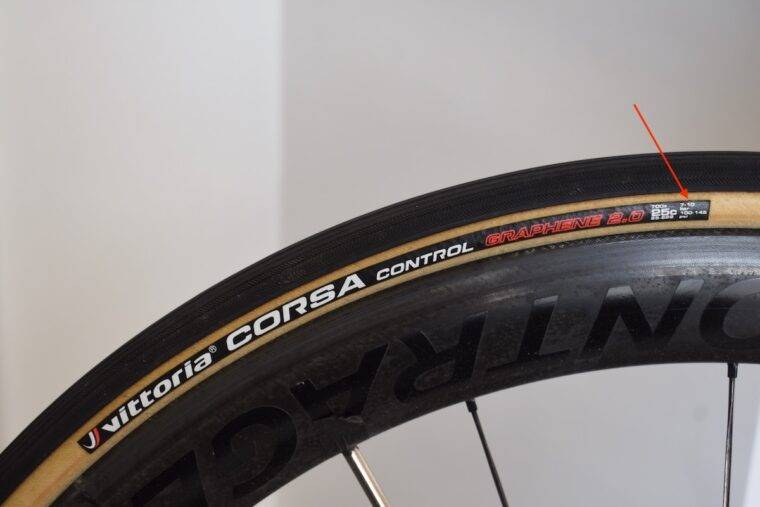Commuting by bike is made more comfortable by riding with the optimal tire pressure. Beginners will need to know where on the tire to find the manufacturer’s recommended amount of inflation. From there, they can work towards finding a sweet spot which could change based on different surfaces and riding conditions.
What Pressure Should My Bike Tires Be?
Bicycle tire pressure is measured in PSI (pounds per square inch) or in bar (from the ancient Greek word for weight). Bike tire pressure should be within a measured range noted on the side of each tire. Manufacturers set this to prolong tire life and acknowledge different rider characteristics.
It’s not unreasonable to start with a tire pressure in the mid-range of the manufacturer’s recommendation. Each tire should show an international standard measurement of size. Manufacturers tend to include the pressure range, or at least maximum pressure, with this information stamped on the side of the tire.
Recommended pressures change depending on the choice of tire and bike. You must choose a tire which fits your wheel safely for the type of bike you own. A mountain bike tire is not suitable for a road bike.
The narrower the width of tire, the higher is the pressure you can usually run to. Tire pressure is also decided by whether you can run tires with or without inner tubes. You will usually run a mountain bike at a lower range of pressure than a gravel bike, hybrid bike, or road bike.
Commuters should want to have the most comfortable ride they can. Tire pressure makes more difference to comfort than other components or accessories. Running too high, or too low a pressure can impact speed, stability and tire wear. You will also increase the risk of punctures or damage to the wheels if you get the tire pressure wrong.
What PSI Should Bicycle Tires Be?
Bike tire PSI should be within the manufacturer’s range and be comfortable and safe for you to use. As you move towards the manufacturer’s maximum limit, you will be sacrificing comfort for speed. You should not run below the minimum PSI and never exceed the maximum PSI highlighted on your tire.
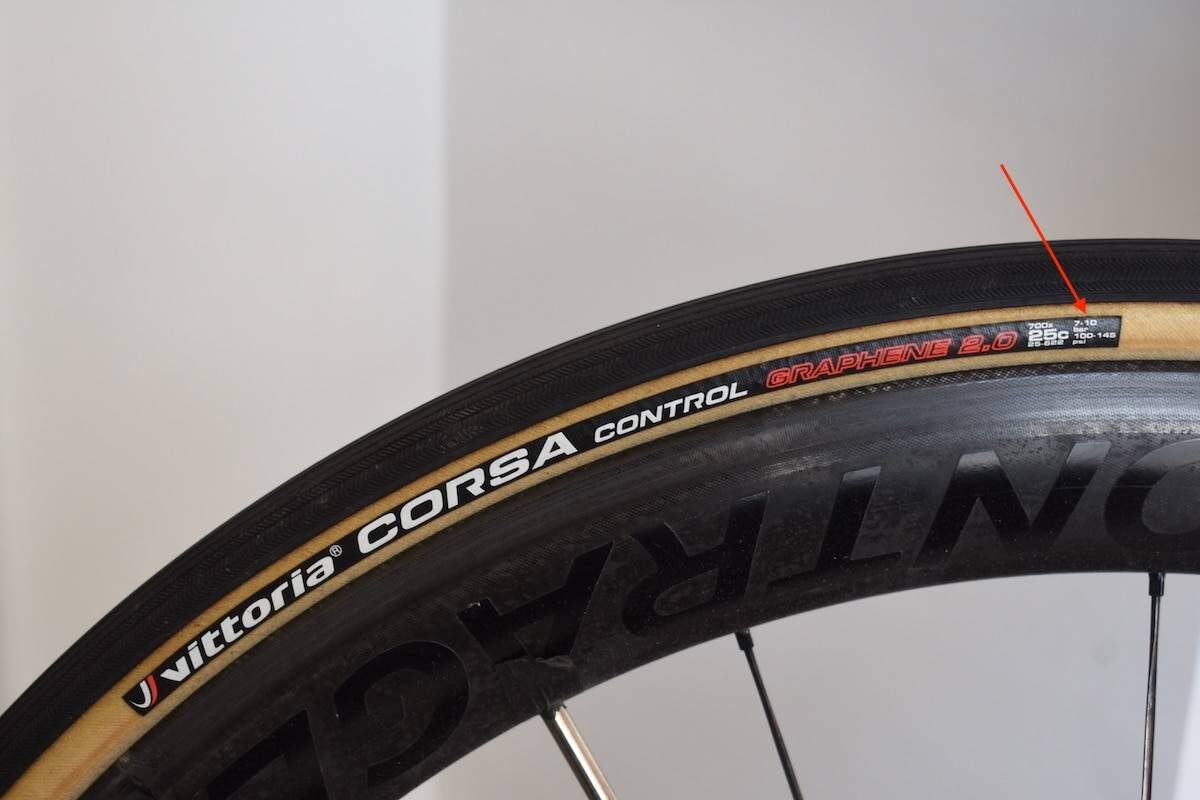
In the example above, for a road racing tire, on the far right of the markings, we see a recommended range of 100 – 145psi or 7-10bar. The manufacturer is European, where countries choose to measure in one format or another. The mid-point would be 122psi or 8.41bar.
The total range is 45psi in this example. Put another way, the pressure can increase by 45% from the minimum.
Why is this?
It is usual for the maximum recommended pressure to reflect a tire’s ability to perform in dry conditions and a butter-smooth surface. Well, congratulations if you always ride in this environment!
The middle of a tire’s PSI range is typically aimed at a rider weight of between 70kg / 154lbs and 80kg / 176lbs. Rider weight is the dominant factor which determines where on the PSI sliding scale you should be.
Carrying weight is an important element of your optimal PSI. If you ride with multiple accessories and essential luggage, you should expect to ride further up the scale than if your total bike weight is leaner.
Bicycle Tire Pressure Tips
With all these variables to consider and a wide PSI range, you should experiment to find your optimum range and work out a sweet spot. Keeping a note of the different ranges of PSI will help but you don’t need to obsess. If you commute on the same route and have the same mass on the bike, you won’t need to change PSI too often.
Regular inflation check-ups
Tires lose pressure regularly and consistently. Even when not in use. As a minimum, check them every week but more regularly if you ride at the low end of the pressure range.
Invest in a good pump with a gauge
Having a bike pump with a gauge is necessary to measure your PSI. Don’t rely on thumb pressure on the tire. You can buy a hand pump with a gauge which you can carry, or keep a track-pump at home. Track pumps are really useful if you have more than one type of bike and ride regularly.
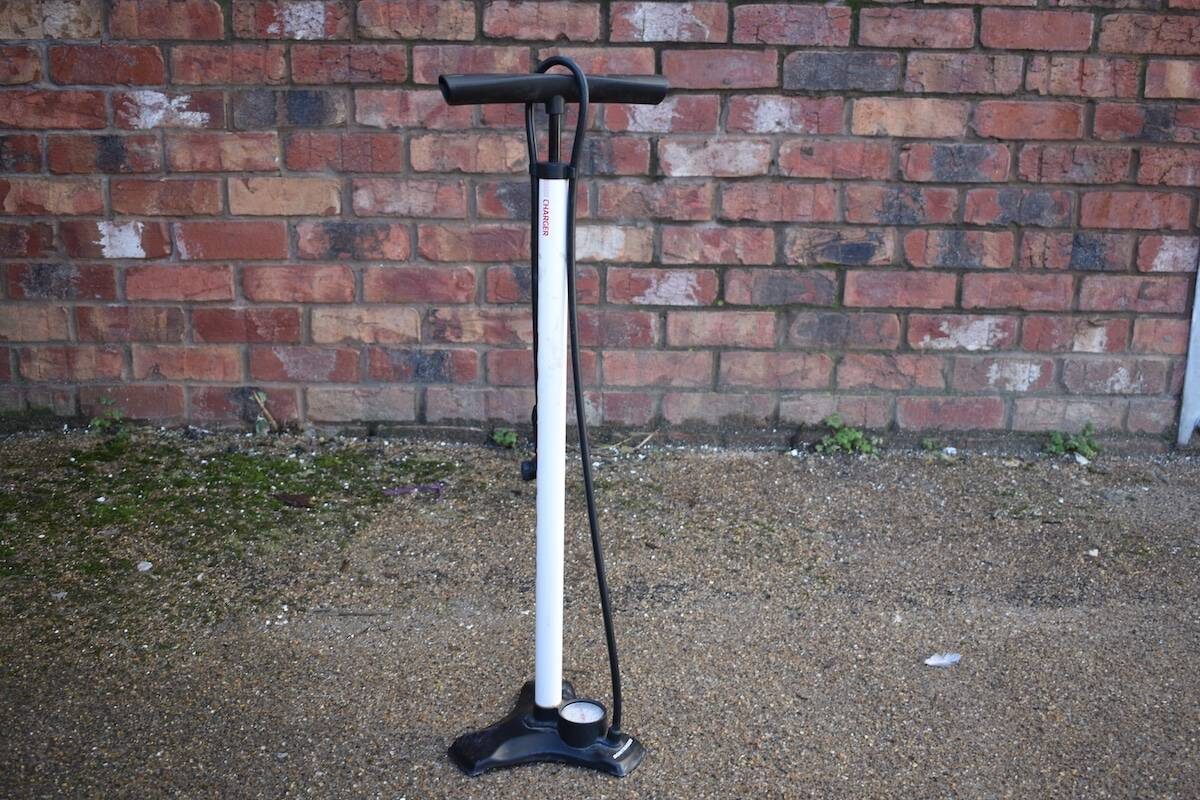
Remember – increased PSI does not equal increased speed
Conventional wisdom used to tell us to always run to higher PSI to reduce rolling resistance. Higher pressure reduces the flex of the tire rubber and this reduces how much of it touches the surface. This meant less effort needed from us to turn the pedals and therefore higher speeds.
Modern thinking adds the effect that running tire pressure too high has on the rider. I’m sure we’ve all felt a ‘buzz’ and vibration when riding firmer tires. Some of this vibration equates to a loss of energy. If you ride your tires at slightly lower pressure to lose this vibration, chances are you won’t notice a loss in speed but you may notice a more comfortable ride.
Reduce the risk of bottoming out and pinch-flats
Most of us can intuitively feel that running a low tire pressure makes the ride feel a little slower but exchange this for comfort. But this – and the deteriorating quality of riding surfaces – increases the chances of getting a puncture.
As the PSI lowers, the chances of the tyre and/or inner tube making contact with the wheel and surface at the same time increases. If they meet, the pressure in the tire is overcome and the rim slices through the tread or inner tube. The sharper and smaller the contact point, the greater the chance of this ‘pinch-flat’.
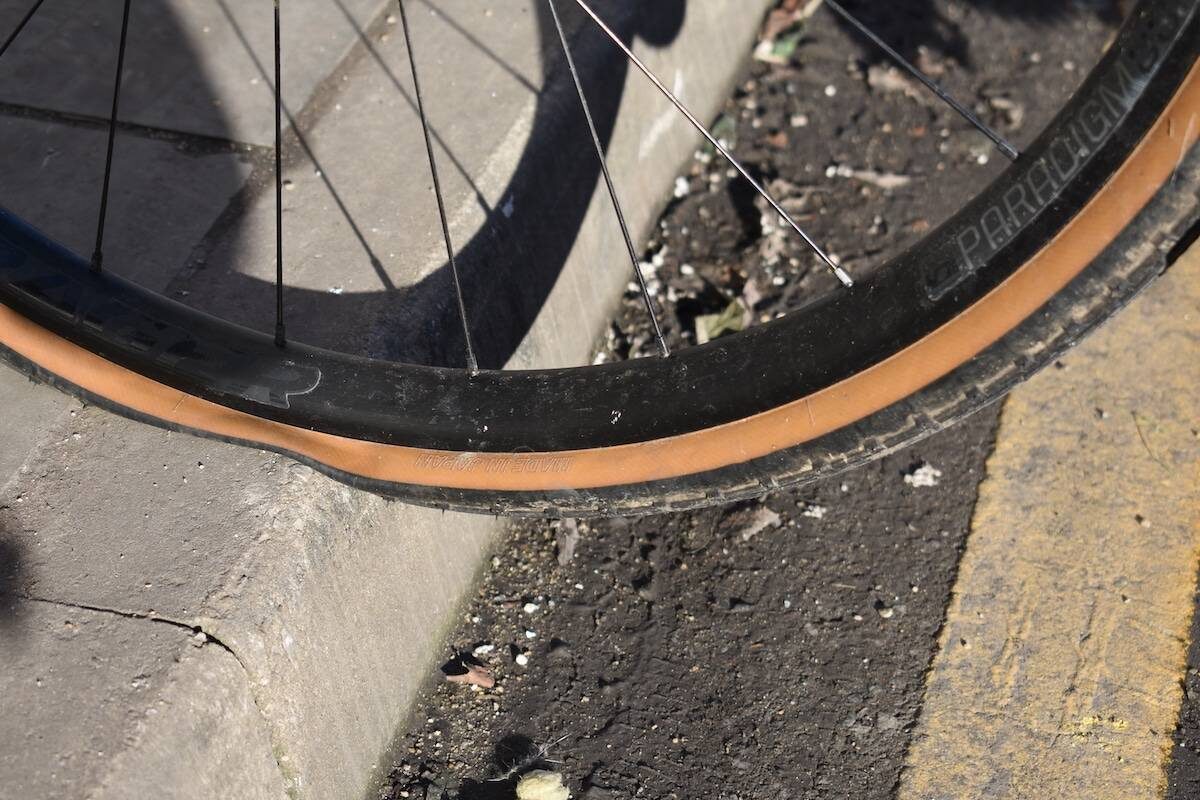
Riding on as smooth a surface as you can avoids this but this is not a real-world scenario. Do not ride swerve wildly to avoid drains or potholes as you ride.
It’s a good idea to avoid riding up and down the corners of kerbstones as their right angles are a trap for under-inflated tires. It’s the same with tree roots. With the right planning you can avoid the edges of potholes by leaving a sufficient gap between you and the road user in front of you.
Lower pressure in wet conditions
Lowering the pressure in the wet by 10% is a good idea. You’ll benefit from more grip as more of the tire’s surface area makes contact with the surface. You’ll also be able to turn corners more confidently. More grip will help to counter the reduced performance of brakes in the wet too. You’ll be riding slower anyway so shouldn’t be bothered about speed.
Other good tire admin
If you can, keep a small carry-pump on your person at all times that you ride so you can top up tire pressure but do not carry on if it immediately lowers again. The chances are that your inner tube or tire is deformed which will make your ride unsafe and could cause expensive damage to your wheels.
Avoid petrol / gas station pumps. Tires which use Schrader valves fit these pumps but they are not designed for use with bike tires. The gauge reading will not be accurate and the risk of a blow out is significant. City authorities are investing in public bike pumps so if you can, choose these. Or find a local bike shop. They should have a pump you can use.
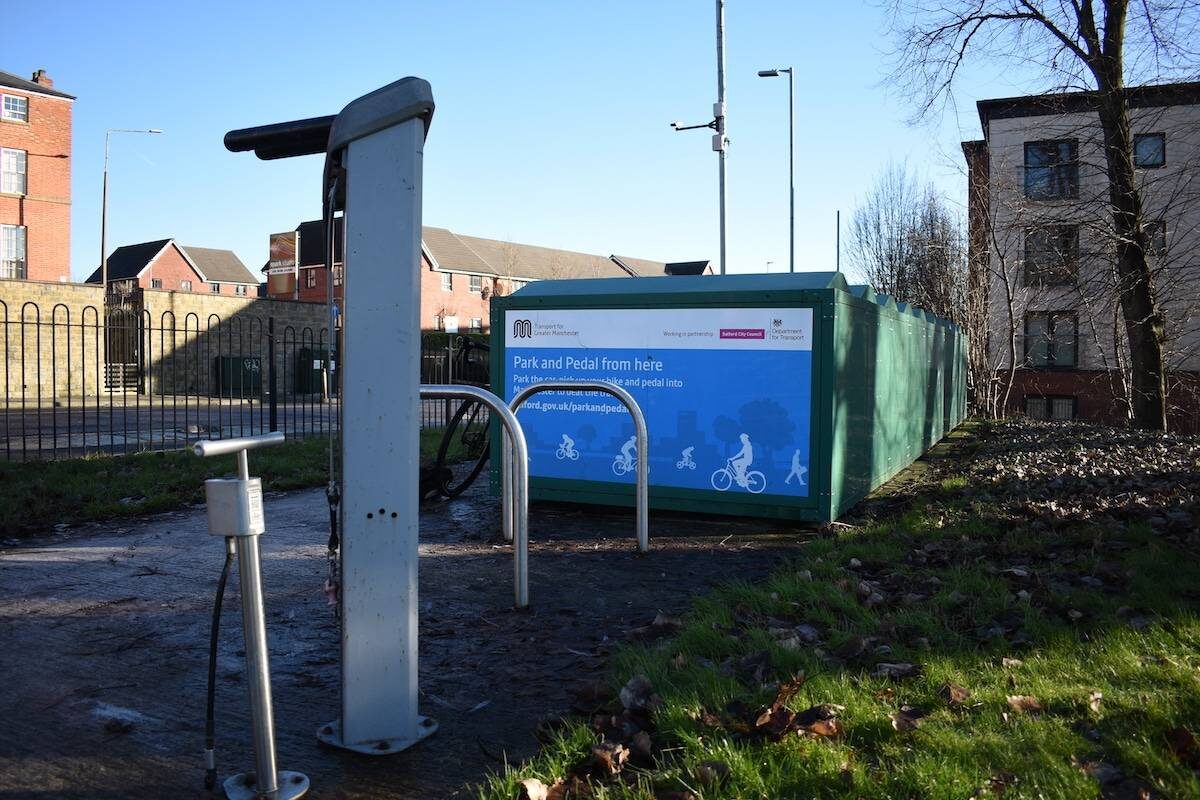
Be aware of the condition of your tire. If you can, check them after each ride for nicks and cuts. Be mindful of the depth and wear on the tread as this will influence the performance and also the PSI you can run.
If your tread is very low, a higher PSI range will affect ride quality and handling. A replacement tire will cost less than repairing a damaged bike caused by a bad fall because of poor tread.
Tire compounds run from soft to hard depending on the level of feel on offer, traction, braking power and puncture resistance – your manufacturer should take this into account when marking up the PSI range.
Consider running a higher pressure on the rear than the front because most rider’s weight distribution on the bike favours the back tire.
Summer vs Winter: Tire Pressure in Hot and Cold Weather
Higher temperatures can increase your tire’s pressure because the molecules inside it move around more rapidly. Contrasting with this, tire pressures lower more quickly in the winter. Air pressure drops in cold conditions but not really by more than 1psi for 10°C, so this impact is negligible.
Colder rubber equals harder rubber and your ride may be more rigid in the winter months. If you ride with tires of a harder compound made for better puncture resistance in grim conditions then lowering the pressure will improve ride comfort.
External temperature fluctuations are not considered as having a dramatic impact on your tire pressure. This is especially true if the ambient temperature where you pump up your tires is close to the temperature outside.
The post Bicycle Tire Pressure: Beginner’s Easy Guide appeared first on Discerning Cyclist.
